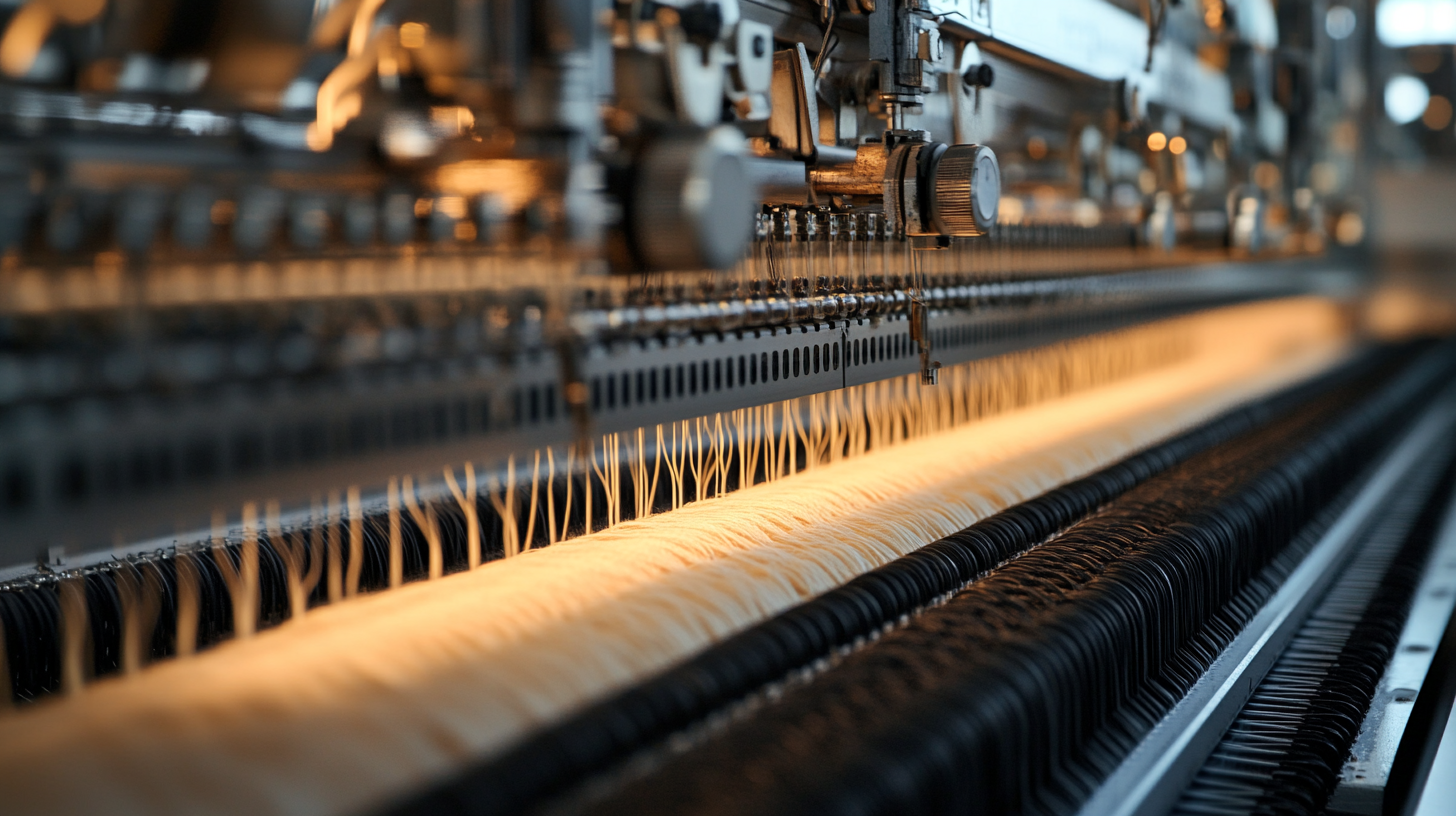5 Essential Tips for Choosing the Best Cutting Machine for Your Business
In the fast-paced world of business, selecting the right equipment can make a significant difference in operational efficiency and overall success. One crucial piece of machinery that many businesses rely on is the cutting machine. Whether you are in the textile, woodworking, or packaging industry, the right cutting machine can streamline your production processes, reduce waste, and enhance the quality of your final products. However, with a plethora of options available on the market, making an informed choice can be challenging.
Understanding the factors that contribute to choosing the best cutting machine for your needs is essential for optimizing your investment. From assessing the specific requirements of your business to evaluating various machine features and performance metrics, there are several key considerations to keep in mind. In this blog, we will explore five essential tips that will guide you in selecting the most suitable cutting machine that aligns with your operational goals and boosts your productivity.

Identifying Your Business Needs: Key Factors in Selecting a Cutting Machine
When choosing the best cutting machine for your business, identifying your specific needs is paramount. Different industries require distinct cutting capabilities, whether it’s precision cuts for textiles in fashion design or heavy-duty slicing for packaging in manufacturing. According to a 2022 industry report by Smithers Pira, the global market for cutting machines is projected to reach $3.5 billion by 2025, underscoring the importance of selecting the right equipment based on your operational requirements. One of the key factors to consider is the type of materials you will be cutting. For example, if your business primarily deals with soft materials like foam or fabrics, a laser cutting machine might be the ideal choice due to its precision and versatility. Conversely, for harder materials like wood and metal, a CNC router could be more beneficial. A recent market analysis by Technavio indicates that CNC machine sales alone are expected to grow by over 15% in the coming years, highlighting a rising trend among manufacturers who prioritize adaptability and efficiency in their cutting processes. Another vital aspect to examine is production volume. If your business demands a high output, investing in a more automated and high-capacity machine could enhance productivity significantly. The same Smithers report found that businesses utilizing advanced cutting machines saw an average increase of 30% in production efficiency. It’s essential to assess your projected workload and select a machine that can meet or exceed these demands without compromising quality. By aligning your business’s needs with the capabilities of the cutting machines available in the market, you can make an informed decision that will lead to sustained operational success.

Understanding Different Types of Cutting Machines and Their Applications
When selecting a cutting machine for your business, understanding the different types of cutting machines available and their specific applications is crucial. The cutting machine market is diverse, featuring various technologies such as laser and plasma cutting, each suitable for different industry needs. For instance, laser cutting machines are projected to experience significant growth, with an expected CAGR of 6.5% from 2025 to 2034. This growth signals a rising demand across sectors that require precision cutting, such as aerospace and automotive, where high accuracy is paramount.
Plasma cutting machines also play a vital role in industrial applications, offering advantages in cutting thicker materials. An analysis of market size and share regarding plasma cutting machines reveals a steady expansion influenced by increasing automation and the integration of CNC technology. Businesses can choose between manual/handheld and automated options, depending on their production volume and specific project requirements, optimizing efficiency and output quality.
Furthermore, the PCB cutting machine market has its unique set of requirements, driven by advancements in electronics manufacturing. These machines cater to precise cutting needs in the production of printed circuit boards, highlighting the importance of selecting the right machine based on your specific use case. Decisions around cutting machinery should factor in these insights, ensuring that businesses are equipped with the right technology to meet their operational demands effectively.

Evaluating Budget Constraints: Cost vs. Features in Cutting Machines
When considering the purchase of a cutting machine for your business, the evaluation of budget constraints is crucial. The decision often hinges on finding the balance between cost and features, which can directly impact your productivity and output quality. According to a report by MarketsandMarkets, the global cutting machines market is projected to reach $9.8 billion by 2026, underscoring the growing demand for advanced machinery that offers both efficiency and precision.
Budget may dictate initial spending, but it’s essential to assess the long-term return on investment (ROI). A cheaper machine with limited features might sound appealing, but it can lead to higher operational costs due to inefficiency and more frequent repairs. A study from ResearchAndMarkets highlights that businesses that invest in high-quality cutting machines tend to see increased output quality and reduced waste, translating to savings in material costs over time.
Additionally, evaluate the specific features that align with your business needs. For instance, whether you require a machine with versatile cutting capabilities or advanced software integration could significantly affect your decision-making process. The initial price might be higher for machines that offer such features, but they often lead to greater flexibility and lower overall costs as operations scale. Engaging with industry reports can provide insights not only into pricing trends but also into which features are most beneficial for similar businesses in your sector.

Considering Machine Size and Space Requirements for Optimal Workflow
When choosing the best cutting machine for your business, it's crucial to consider the machine size and space requirements to ensure optimal workflow. The dimensions of the machine can significantly impact its performance and your operational efficiency. A large cutting machine may promise high output, but if your workspace is limited, it could lead to clutter and hinder productivity. It’s essential to assess your available space and choose a machine that not only fits but also complements your workflow.
Additionally, the layout of your workspace is important. Ensure that there is enough room around the machine for operators to maneuver efficiently, especially during setup and maintenance. An effective workflow minimizes unnecessary movements, allowing for quicker production cycles. A well-planned space can facilitate better organization and management of materials, similarly to how AI optimizations discussed in recent research can streamline complex processes. Just as these innovations are poised to enhance data efficiency and processing, selecting the right cutting machine with consideration for size and space can help elevate your operational capabilities.
Researching Manufacturer Reputation and Customer Support Options
When selecting a cutting machine for your business, one crucial aspect to consider is the reputation of the manufacturer. A reputable manufacturer often guarantees not only quality products but also reliable customer support. Researching the manufacturer’s history, their market presence, and user reviews can provide valuable insights into how they handle customer relations. Engaging with online forums or customer feedback platforms can reveal experiences from other businesses, helping you gauge the manufacturer's support capabilities.
In addition to reputation, evaluating customer support options is vital. A good manufacturer should provide multiple avenues for support, whether through phone, email, or live chat. Look for companies that offer comprehensive resources such as troubleshooting guides and FAQs on their websites. This can significantly reduce downtime in case of issues with the machinery. Furthermore, consider manufacturers that offer extensive warranties or service packages, ensuring you have access to maintenance and repairs without incurring hefty costs.
Considering sustainability is becoming increasingly important in purchasing decisions. Consumers are putting their money behind brands that demonstrate environmental and social responsibility. Therefore, when researching manufacturers, check if they prioritize sustainable practices in their production processes. This not only aligns with growing consumer preferences but can also enhance your brand's image as you invest in cutting machines that reflect your commitment to responsible business practices.

